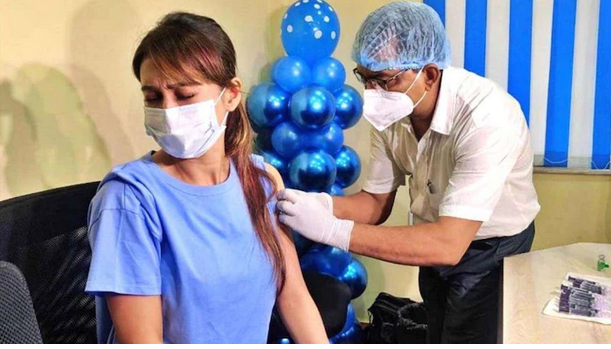
Low caseloads, plentiful vaccine stocks: Why COVID boosters make sense

Opening up the third dose of COVID-19 vaccines to the general adult population at private centres beginning Sunday comes at a time when infection cases are low – about 1,054 new cases were reported in the last 24 hours across the country.
It also comes when vaccine supplies are in plenty – currently, over 17 crore doses are available with states, according to the Ministry of Health and Family Welfare.
Broadly, opinion among public health experts about the need for a third shot in India has been divided – with some arguing that the situation does not warrant a booster shot and others saying it should be mandatory for all. The move to make third shots available through private centres, therefore, takes a middle path of sorts – vaccines are available for those who want them while the government will continue to cover the high-risk segments.
The on-going free vaccination programme for the first and second doses – as well as precaution doses to healthcare and frontline workers and the elderly population – would continue.
So far, about 96 per cent of the 15-plus population in the country has received at least one dose while 83 per cent has received both doses, according to the ministry.
“We’ve essentially created a safety shield with two doses in the government system. Now the third, fourth, fifth dose or wherever it goes from now, it’s all right to have people go to private centres. I think it’s the right strategy to use,” says Neeraj Jain, country manager of PATH, a global non-profit which works on public health projects. “There are other public health programmes which have been suffering over the last couple of years and we need to get that going well,” says Jain.
“Other areas have been suffering, there’s no doubt about it,” says Prof K Srinath Reddy, president of the Public Health Foundation of India (PHFI). But the tricky part, he says, is deciding whether the population is at a continued medium-to-high risk or at low-risk. “Right now, the feeling is we are at a low risk stage… we have crossed the Omicron phase, other countries are still battling with it and even if one of the new recombinants comes in, we should be able to handle it without too much difficulty.”
With the third dose vaccination moving to private centres, there’s also a possibility of uneven accessibility between urban centres and rural areas, he points out. Therefore, the equity principle that has so far guided Covid vaccination – that all eligible people are entitled to a jab – would still hold good and the government set-up would have to swing in if a serious outbreak of COVID infections were to happen, he adds.
Going by the vaccination figures so far, about 75 crore adults aged between 18 and 59 will be eligible for a third dose – of course, depending on when their last jab was administered. For the precaution dose, the health ministry specifies a gap of nine months after the second jab.
As the Indian Council of Medical Research (ICMR) has said previously, conservative estimates indicate that immunity from two-dose vaccination persists for nine months although hybrid immunity – that is, from both a previous infection and vaccination – is believed to last longer.
“The government is now thinking, and perhaps rightly so, that we are not sure how long the immunity in the people who have been given one or two doses would persist,” says Rajesh Bhatia, a former World Health Organization official.
“We are in a comfortable situation and the government is trying to provide additional protection to those who can afford. This time the catch is that you have to pay for it.”
Bhatia reckons this approach is similar to that of other vaccines such as the Influenza or pneumococcal vaccines available for adults. “Especially the elderly ones, we take it as and when we require it,” he says. The Covid vaccine too could likely follow that same path, he feels.
“Even if 25-30 per cent of the people take the vaccine with their own money, at least they will be cutting down significant transmission of the virus if it comes up in a big way. That will give the government extra time to put things together and try to vaccinate more people,” says Bhatia.
While 75 crore first doses have been administered so far to the 18-59 age group, the second dose coverage currently stands at 65 crore.

